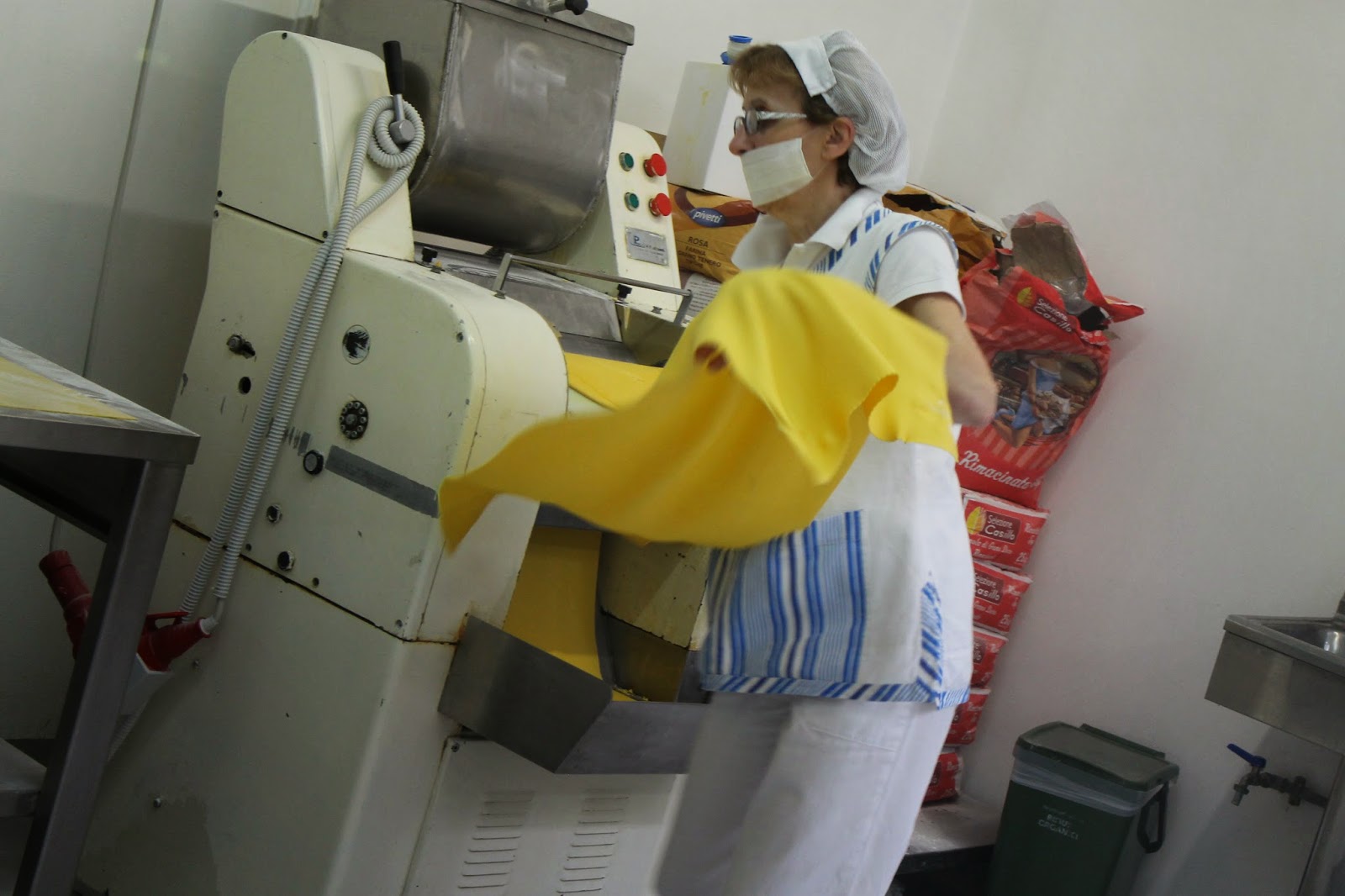One of the most exciting and inspiring trips that we took during our Tastes of Northern Italy trip was to the Acetaia Caselli, in San Vito di Spilamberto, Modena.
Modena, is located in the agricultural region of Emilia-Romagna which produces culinary treasures such as Parmigiano Reggiano, Prosciutto di Parma, and Balsamic Vinegar of Modena. It is a region that is also known for Lambrusco wine, Barilla pasta, and is home to Italian car makers such as Ferrari and Lamborghini.
We arrived at the Acetaia Caselli and were greeted by 3rd generation Balsamic producer, Simone Caselli. He greeted us with a friendly smile and handshake and invited us up into the aging room to explain the production process and history.
I was immediately struck by the large number of barrels lined up in descending order, each with a little terracotta dish underneath, a small piece of cloth on top, and a wooden cap that is placed over the opening.
As Simone explained the process of producing the balsamic, I came to understand the art and tradition of family and patience that is such an important part of what makes this vinegar so special.
Like so many other producers that we visited on our trip, this was a family business, started by Simone's grandfather, passed down from generation to generation. The Acetaia Caselli produces both 12 and 25 year old balsamic, in a process that is very reliant on patience and the passage of time. The vinegar is made primarily from Trebbiano and Lambrusco grapes that are grown in the Modena region. The grapes are cooked down into a "must" or "mosto" and then added into the "Mother Cask" where it is then transferred to the largest of the stacked barrels in the "batterie" or aging line.
Once the vinegar has aged for a year or so, it is transferred into the next barrel. The barrels are made up of a variety of types of wood, which influence the complexity and flavor. This process is repeated as the vinegar evaporates over time, ages, and becomes more and more concentrated. Finally, they are able to harvest about 10% of the product from the smallest barrel. Once the vinegar is harvested, it must be presented to a Tasting Board, where it is tasted and evaluated in order to be classified as Traditional Balsamic Vinegar of Modena.
The line, which began about 75 years ago, still contains traces of the original grapes, a process that was started by Simone's grandfather. As I listened to him speak about this, I couldn't help but realize that this was a tradition of perpetual and continuous work, one that is passed down from generation to generation in a literal and physical way.
After the tour of the aging room, we went downstairs for a tasting and wonderful lunch prepared by Simone's wife and mother.
First, we tasted a "condiment alimentare" or Aged Condiment, which was a less expensive and time consuming product, but a really fabulous balsamic vinegar. This vinegar is produced with red Lambrusco grapes rather than the white grapes used in Traditional Balsamic, and takes less time to age, therefore they refer to it as a "condiment" rather than a Traditional Balsamic Vinegar of Modena. Simone described this as an example of a vinegar where the sweet and sour flavors are separated as you taste it, rather than integrated as they are in the older, 12 and 25 year old varieties.
We then tasted the progressive flavor complexity and aging in the 12 year and the 25 year old "Aceto Balsamico Tradizionale di Modena". Otherwise known as the real deal of balsamic vinegar....It was at this point that I realized that I would never be able to return to my original Balsamic world again.
In just a few thick drops, I experienced a history of complex, rich flavor. They were like little drops of gold with a sweet and sour combination that is difficult to put into words.
After our tasting, our lunch incorporated each type of vinegar in a variety of small dishes. We had salad dressed with the condiment, a variety of appetizers, cheeses, and meats, and a wonderful pasta drizzled with Balsamic. Finally a dessert with strawberries, balsamic and a small cheese cake completed our meal.
For me, this was an incredibly inspiring, informative visit, where the importance of family, history, artistic process, and food all came together in order to create a complex and beautiful product, one that would be experienced, just as it was made, over time. It was a reminder that the art of patience and slowing down is not such a bad thing...but something to be valued, honored, and respected.
We left the Acetaia Caselli as we were greeted, with smiles and waves goodbye from the family.
Please visit their website for more information about their process, and products. I found this beautiful video on there and just had to share it here for you. Enjoy!


































































